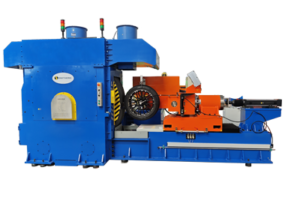Smithers invests in simulated on-vehicle acceleration testing machine in Suzhou laboratory
Akron, OH – Smithers has announced that it has invested in a state-of-the-art simulated on-vehicle acceleration testing (SOVAT) machine. This new testing capability was recently launched at the Smithers Suzhou, China laboratory with full machine demonstrations and tire testing training for attendees.
The SOVAT machine is the result of working with vehicle and tire manufacturers to understand their tire testing pain points. On-vehicle tire testing can be time-consuming and inconsistent, driving the need for faster, more repeatable methods for treadwear, chip and chunk, road hazard endurance, and break-in testing. With the SOVAT machine, clients now have an indoor, repeatable option to conduct this testing, providing results in a fraction of the time.
“Our investment in tire testing technologies in the Asia Pacific region has always been on the forefront of new trends and technologies,” stated Derek Read, Vice President, Asia Pacific & Global Development, Smithers Materials Science and Engineering Division. “We believe that through this investment, Smithers will further provide unique services and solutions to the automotive industry. At the same time, we look forward to working hand in hand with industry experts to promote the innovation and development of tire technology.”
The machine has a rough drum surface that mimics real road surfaces and can be fitted with specially designed cleats to simulate road hazards. Lateral and longitudinal forces can be applied to the tires simultaneously, which is closer to on-vehicle operating conditions, and helps to conduct laboratory analysis of irregular tire wear, chip, and chunk problems. It also supports accelerated wear tests with multiple drive profiles to simulate real-world treadwear. This greatly reduces the time and cost of on-vehicle wear testing for benchmarking studies. Lastly, the SOVAT is equipped with tightly controlled acceleration and deceleration to test wheel covers in operating conditions that resemble the high torque from electric vehicles.
“On-vehicle tire testing has always been a time consuming, expensive process,” said Smithers Henry He

